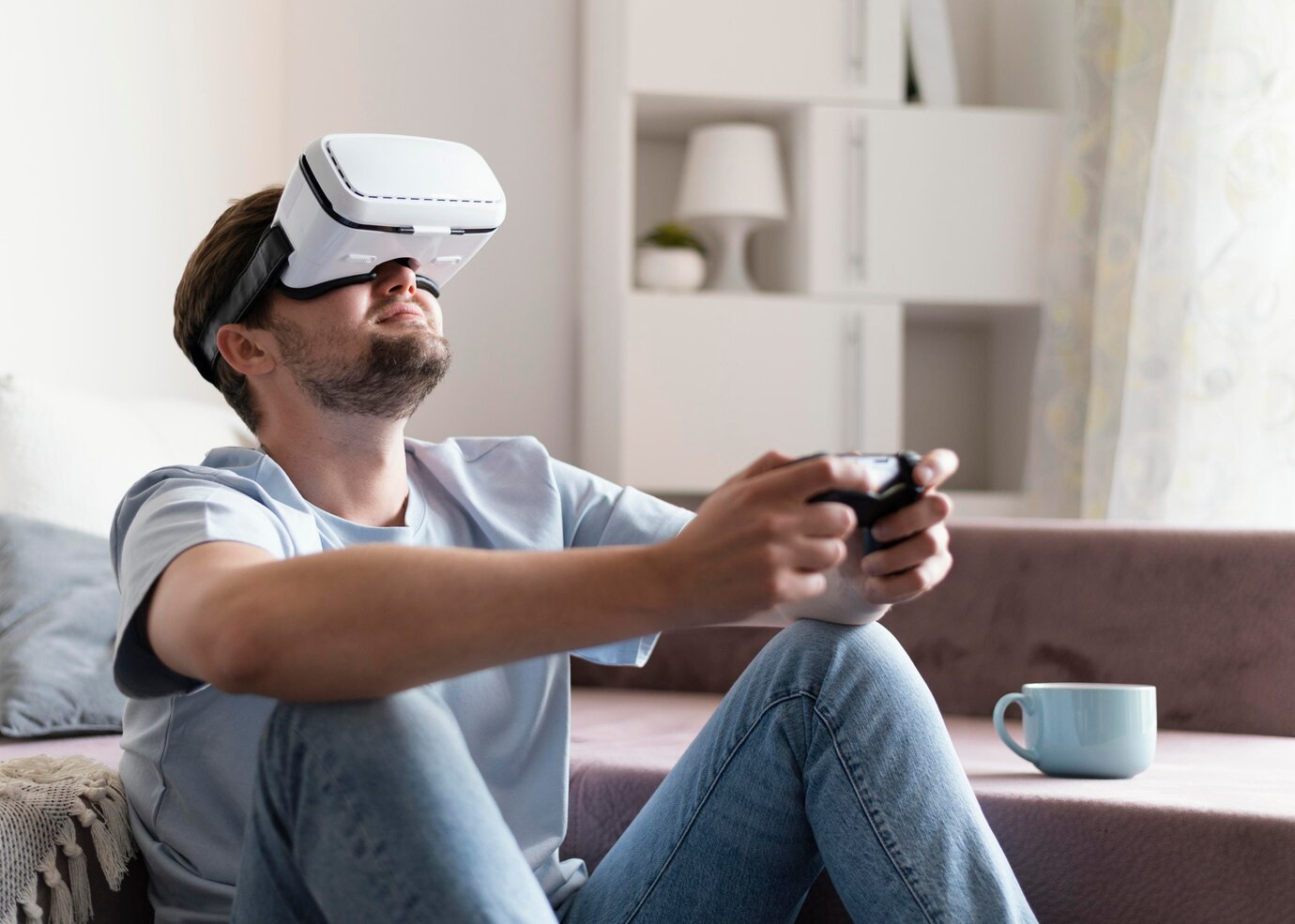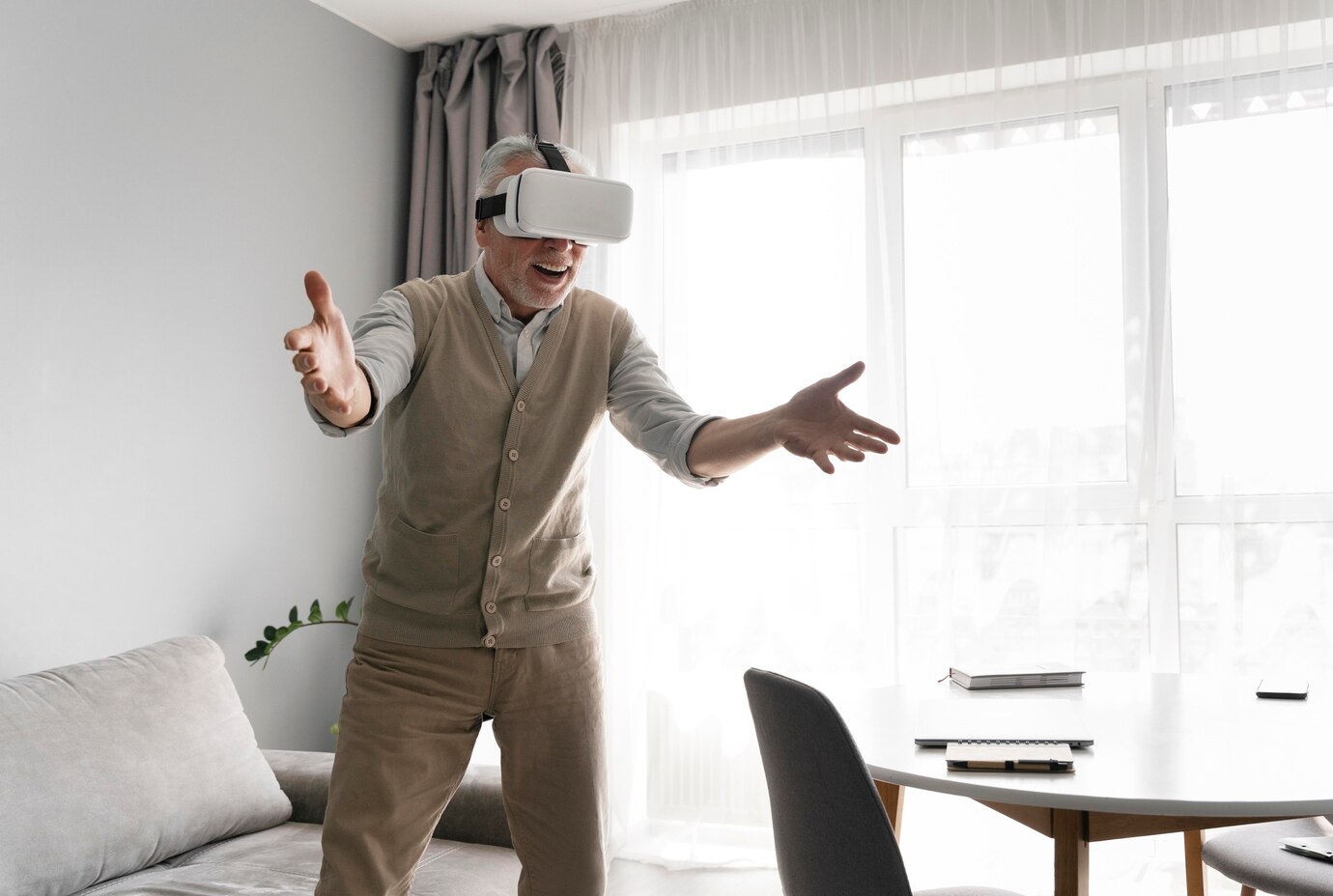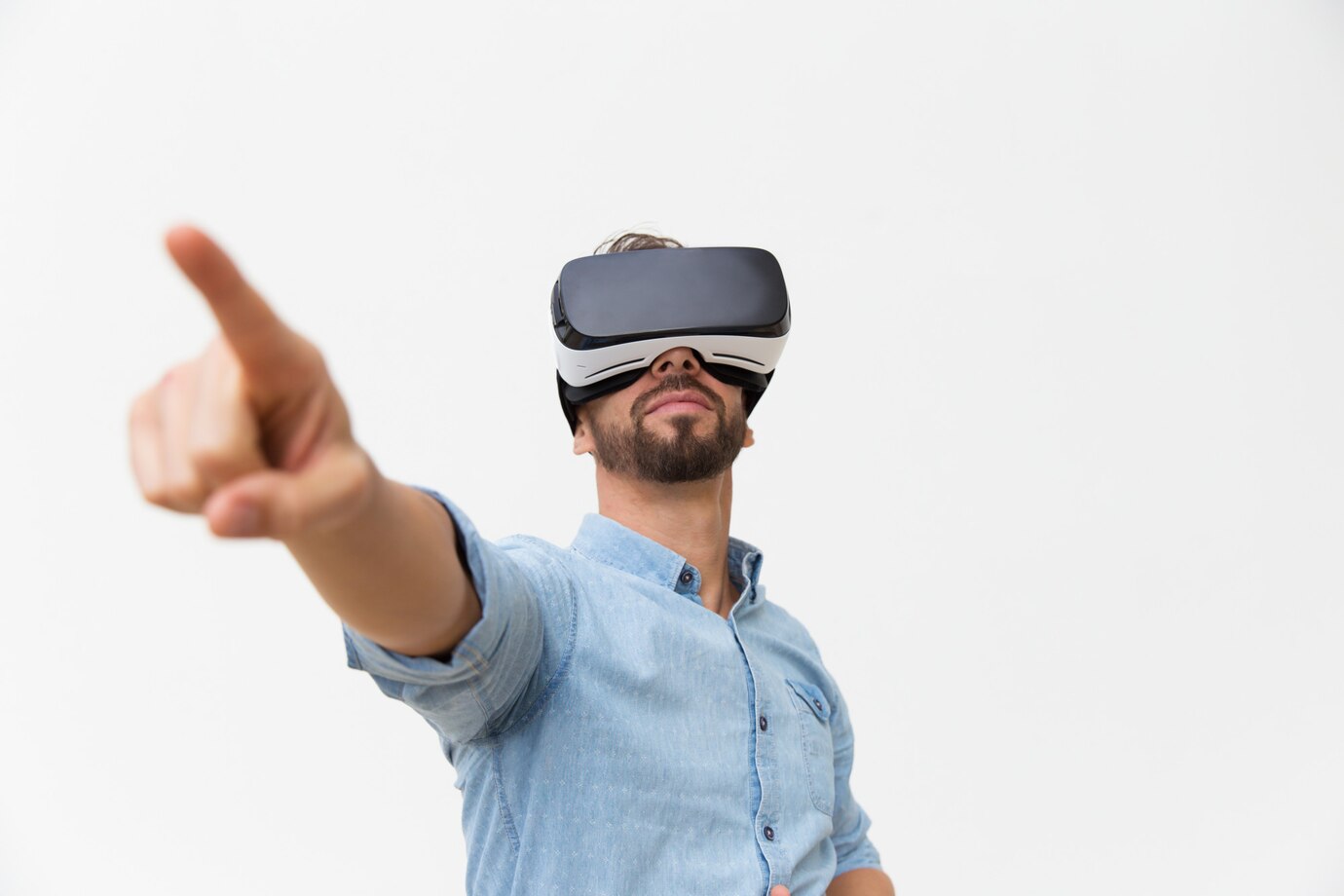Virtual Reality vs. Augmented Reality: What’s the Difference?
In recent years, virtual reality (VR) and augmented reality (AR) have transformed digital experiences. Both technologies create immersive environments, but they have different purposes and functions. The discussion of VR vs AR is growing as various industries, from virtual reality gaming to healthcare, explore their potential. This guide will explain their key differences, applications, and

In recent years, virtual reality (VR) and augmented reality (AR) have transformed digital experiences. Both technologies create immersive environments, but they have different purposes and functions. The discussion of VR vs AR is growing as various industries, from virtual reality gaming to healthcare, explore their potential. This guide will explain their key differences, applications, and future.
Understanding Virtual Reality (VR)

What Is Virtual Reality?
Virtual reality (VR) is a computer-generated simulation that immerses users in a digital world. With VR headsets, users can interact with a 360-degree environment that feels real. Virtual reality gaming is popular, offering unmatched experiences in simulated worlds.
How VR Works
VR uses specialised hardware and software to create an immersive experience. Key components include:
- VR Headsets – Devices like Oculus Quest and PlayStation VR transport users to virtual spaces.
- Motion Controllers – Handheld controllers track movements, allowing interaction in the virtual world.
- Haptic Feedback – VR gloves and suits simulate touch sensations for added realism.
- Spatial Audio – 3D sound enhances immersion by mimicking real-world audio cues.
Key Applications of Virtual Reality
- Gaming & Entertainment – Virtual gaming is central to VR, with games like Half-Life: Alyx and Beat Blade providing engaging experiences.
- Education & Training – VR is used for medical training, flight simulations, and interactive learning.
- Healthcare – Surgeons train in VR for complex procedures before performing them in real life.
- Real Estate – Virtual tours help buyers explore properties from afar.
- Fitness & Well-being – VR workouts offer interactive programs with gamified elements.
Understanding Augmented Reality (AR)
What Is Augmented Reality?
Augmented reality (AR) enhances reality instead of replacing it. Unlike VR, which immerses users in a digital world, AR overlays virtual objects onto real-world spaces.
How AR Works
AR combines virtual information with the real world through:
- AR Glasses & Headsets – Devices like Microsoft HoloLens and Magic Leap project digital objects in physical locations.
- Smartphones & Tablets – AR apps use mobile cameras to place digital images in real-world scenes.
- Projection-based AR – Some AR systems use projectors to display digital elements on physical surfaces.
Key Applications of Augmented Reality
- Retail & E-commerce – AR lets users try on clothes and preview furniture before buying.
- Navigation & Travel – AR maps provide real-time directions and points of interest.
- Education – AR makes textbooks interactive with 3D models.
- Healthcare – AR helps in surgeries by overlaying digital images for precision.
- Marketing & Advertising – Brands use AR to create interactive product experiences.
Comparing VR vs AR: Key Differences

Immersion Level
- Virtual reality offers full immersion, blocking out the real world.
- Augmented reality overlays digital elements, keeping users aware of their surroundings.
Hardware Requirements
- VR needs headsets, controllers, and motion sensors for a complete experience.
- AR mainly relies on smartphones, tablets, and AR glasses for overlays.
Real-World Interaction
- Virtual reality isolates users in a fully digital space.
- Augmented reality blends digital components with physical surroundings.
Accessibility
- VR headsets can be expensive and often need high-performance computers or consoles.
- AR is more accessible, as most modern smartphones support AR applications.
Virtual Reality Gaming vs. Augmented Reality Gaming
Gaming is a major industry for both VR and AR. While both enhance interactivity, they offer different experiences.
Virtual Reality Gaming
- Completely immersive gaming worlds
- Requires VR headsets and controllers
- Examples: Beat Saber, Half-Life: Alyx, and Resident Evil 4 VR
Augmented Reality Gaming
- Blends digital elements with real-world gameplay
- Uses smartphones or AR glasses
- Examples: Pokémon GO, Minecraft Earth, and Harry Potter: Wizards Unite.
The Role of VR and AR in the Workplace
Virtual Reality for Workplace Training
Many industries use virtual reality for training, offering simulations for:
- Medical Procedures – Surgeons practice complex surgeries in a safe setting.
- Manufacturing & Engineering – VR helps workers learn machinery without hazards.
- Emergency Response Training – Firefighters and police use VR for crisis simulations.
Augmented Reality for Workplace Productivity
Augmented reality boosts workplace productivity and collaboration through:
- Remote Assistance – AR allows technicians to get real-time visual help from experts.
- Design & Prototyping – AR helps architects visualise projects in real-world settings.
- Hands-Free Information Access – AR smart glasses provide workers with instructions without using their hands.
The Future of VR vs AR
Advancements in Virtual Reality
- Wireless VR – A majority of the devices are going wireless, which leads to a reduction in PC and console dependency.
- Eye-Tracking Technology – Enhance interaction through tracking where users gaze in a virtual environment.
- Haptic Suits & Gloves – Provides realism to the user by tracking the touch of the user in a virtual environment.
- Social VR – Meta’s Horizon Worlds and similar platforms are geared primarily towards social interactions in VR.
Advancements in Augmented Reality
- AR Contact Lenses – Companies like Mojo Vision are developing lenses that project AR displays onto users’ eyes.
- 5G & Cloud-Based AR – Cloud-based AR gives Faster data speeds that will enable smoother AR experiences.
- AI-Powered AR – AI-driven AR offers personalised experiences based on real-time surroundings.
- AR Smart Glasses – The next evolution of wearable tech, possibly replacing smartphones.
Choosing Between VR and AR: Which One Is Right for You?
When to Choose Virtual Reality
- If you want full immersion in gaming, simulations, or training.
- When physical reality doesn’t matter for your experience.
- If you have access to high-performance hardware.
When to Choose Augmented Reality
- If you enjoy a blend of digital and real-world interactions.
- For practical uses like shopping, navigation, or education.
- If you want a more affordable and accessible solution.
The Impact of VR and AR on Social Interaction
- VR Social Spaces – Virtual reality builds new digital communities. Users can interact in lifelike environments.
- Augmented Reality in Communication – AR improves video calls. It adds 3D avatars, digital effects, and real-time translations.
- Virtual Workspaces – Businesses are using VR for remote teamwork. They offer virtual offices for meetings.
- AR in Events – AR enhances events like conferences and concerts. Attendees enjoy digital features in real-time.
VR and AR in Accessibility and Inclusion
- Assisting Individuals with Disabilities – AR and VR offer tools for visually impaired users. These include audio-guided navigation and text-to-speech apps.
- Enhanced Learning for Special Needs – Virtual reality provides interactive lessons for students with learning challenges. This increases their engagement.
- Remote Healthcare Services – VR allows patients to join therapy sessions and medical consultations from home.
- AR Translation – AR translation apps help travellers by giving real-time translations. They can translate signs, documents, and conversations instantly.
Conclusion: Experience Both the Worlds

The debate of VR vs AR continues as both technologies shape the future of digital experiences. While virtual reality gaming offers immersive worlds, augmented reality enhances real-world interactions with digital overlays. In gaming, healthcare, or education, VR and AR are changing how we interact with technology. As advancements continue, these innovations will blur the lines between the physical and digital worlds, creating exciting possibilities for the future.